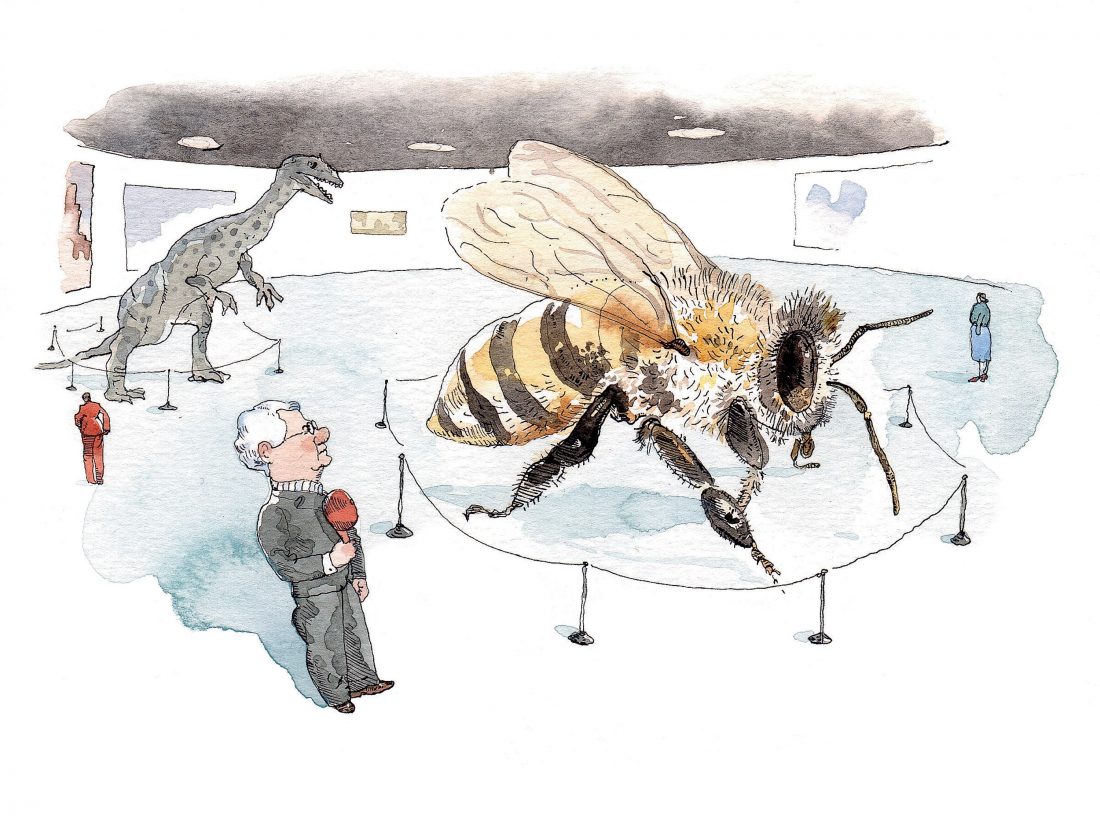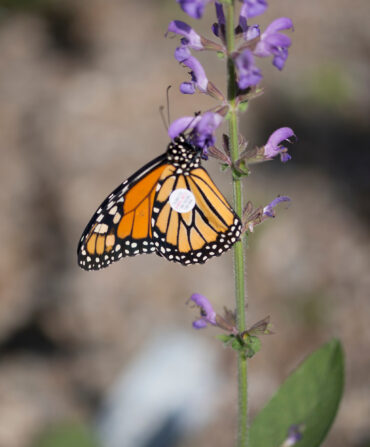“Was you ever bit by a dead bee?” Walter Brennan keeps asking people in To Have and Have Not. In his book about writers in Hollywood, Tom Dardis assumes that William Faulkner—“because it sounds like Faulkner”—came up with that line. Faulkner did contribute to the shooting script, but the bee line has now been traced to an earlier draft by Jules Furthman. What Faulkner did write, in Flags in the Dust, was “…the garden lay in sunlight bright with bloom, myriad with scent and with a drowsy humming of bees—a steady golden sound, as of sunlight become audible.”
Bees themselves may not know they’re buzzing—like human teenagers before cell phones, they communicate by means of dancing and pheromones. In an astonishingly intimate documentary, Tales from the Hive, you can watch a forager bee doing the waggle dance, by which she gives the worker bees directions to a new source of nectar. Bees buzz because bees be busy. Their intense wing vibration makes sound waves to human ears.
And I don’t know about your garden, but in mine I do not hear bees waxing Faulknerian. Every year for the past ten or so, the U.S. bee population has declined by a quarter to a third. And if you don’t think you can get bit by a dead bee, consider this: According to the actor and environmentalist Ed Begley, Jr., for BeeAction.org, “one of every three bites of food you and I eat is pollinated by honeybees.” One bite thank you Lord, one bite thank you Mama (excuse me, Ed, that bite’s mine), one bite thank you bees.
Without bees we’d not only be out of honey, we’d lose most of our apples, blueberries, blackberries, watermelons, cucumbers, squash, almonds, cantaloupes, and so on, because—it’s a sweet system. While gathering nectar and pollen for their hives, honeybees serve as little cupids for the fruits and vegetables. In graphic terms, the bees offhandedly (I don’t want to say inadvertently—I think they kind of know) carry pollen from the male parts to the female parts of fruit and vegetable blossoms. And why can’t the apples and cantaloupes do this for themselves? Because it would be weedy and unsocial; it’s not how these fruits and vegetables roll. Do it for each other? That would make appaloupes. Well, couldn’t we get undocumented workers to do it? The Internet? Nope. Other insects and the wind can do some of it, but mostly it’s got to be bees.
Do you regard bees in a negative light? You may be thinking of “killer bees,” which have made their way over from Africa and up from Brazil into terrible disaster movies and a real-life invasive presence across the South and Southwest. Indeed you do not want to stir up these bees, because they will come out in full swarm and chase you for half a mile stinging you hundreds of times while you run, and if you dive underwater, they will wait for you to come up. Their venom isn’t any stronger than other bees’, they just have a hair-trigger all-in defense system. But far more Americans are killed by pet dogs every year than by killer bees. Some hope has been advanced that these bees might be bred with regular honey-bees to produce a hybrid more resistant to what is causing Colony Collapse Disorder.
If only we knew what the cause is. Beekeepers go out to their hives and find that their bees have disappeared. Wandered off to die scattered, where their bodies are hard to find. When little autopsies are possible, they do not lead to definite conclusions. Maybe it’s the mites that get on bees, maybe it’s the chemicals employed to kill the mites. Maybe it’s the stress on bees from being loaded into trucks and dragged all over the country to service blueberries in Maine and almonds in California. Maybe forager bee comes in and does the hell-I-don’t-know-where-anything-is-anymore dance.
Of all the theories put forward, here’s the one most appealing to my sense of non-fitness. Bees’ immune systems depend on their foraging from diverse blossoms. Bees that have fallen into agribusiness are more and more being fed high-fructose corn syrup and, get this, “pollen substitute.” Feeding corn syrup to honeybees is like feeding LeBron James a beach ball. And pollen substitute? No wonder our bees are leaving us—we’re making them feel like they aren’t really bees.








